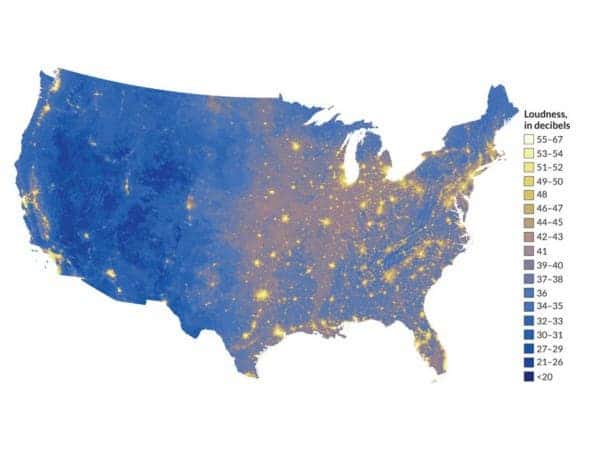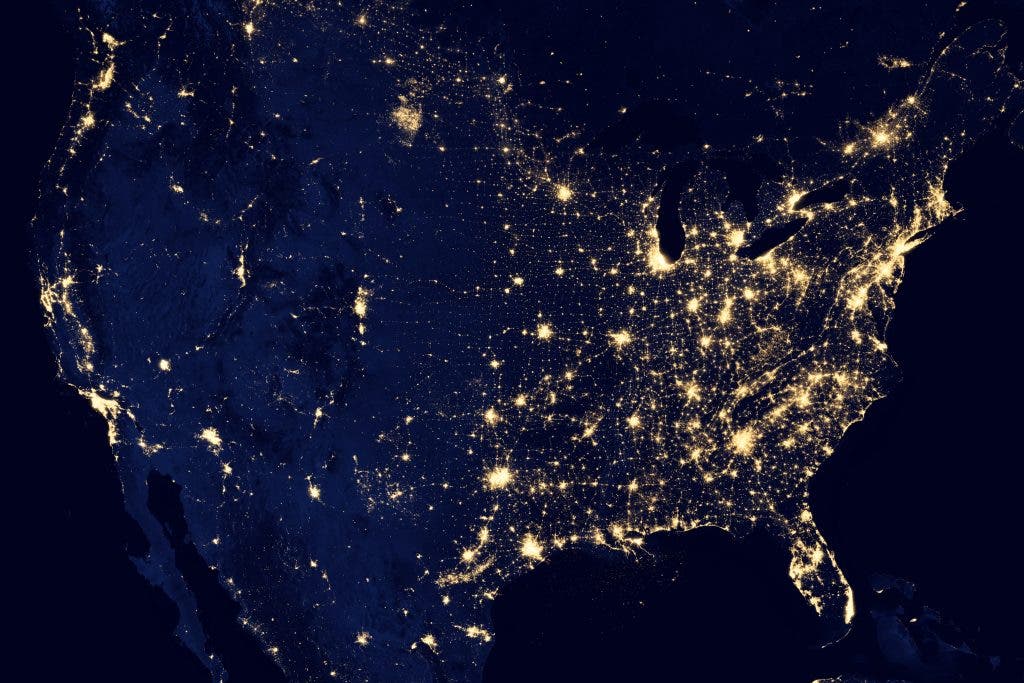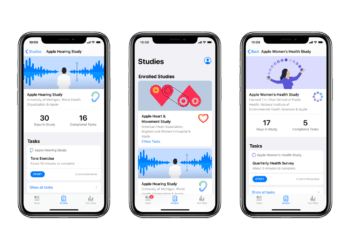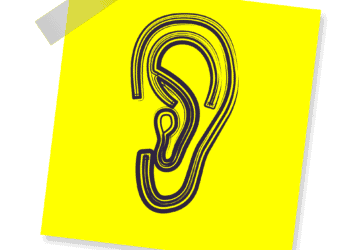Speaking at the 2015 AAAS Annual Meeting, US researchers showed a coloured map of the quietest regions in the United States, based on 1.5 million hours of acoustical monitoring from places as remote as Dinosaur National Monument in Utah and as urban as New York City. Apparently, the eastern half of the country is much more loud than the western half. The West coast seems to be an exception, but that’s not all that surprising considering LA and New York. Deep blue regions like the Yellowstone National Park in Wyoming and the Great Sand Dunes National Park in Colorado are among the quietest in the country – here a background noise lower than 20 decibels is seen, very similar to that found in pre-colonial times, according to the researchers. The busy cities, however, are orders of magnitude louder, standing somewhere between 50 to 60 decibels.

Seems familiar? Well, take a look at the night light map.

By definition, noise pollution takes place when there is either excessive amount of noise or an unpleasant sound that causes temporary disruption in the natural balance. This definition is usually applicable to sounds or noises that are unnatural in either their volume or their production. Our environment is such that it has become difficult to escape noise. Even electrical appliances at home have a constant hum or beeping sound. It’s great to hear that there are still many places where you can experience primordial tranquility. You just have to leave the cities!
Concerning the noise map, biologists believe they’ll find it useful to identify places where humanmade noise is affecting wildlife. Bats and owls, for instance, are particularly sensitive to noise pollution. These animals rely on their keen sense of hearing, which can be 20 decibels more sensitive than our own, to hunt low humming insects and rodents. If disrupted by background noise, they’d be unable to hunt, feed and survive.






